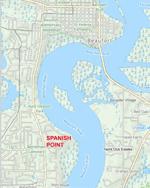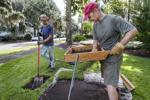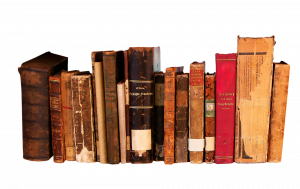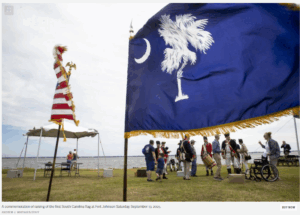BEAUFORT — In August, a team led by University of South Carolina archaeologist Chester DePratter searched in residents’ yards, city parks, and the lawn of the First African Baptist Church for evidence of a 17th-century Scottish settlement known as Stuarts Town.
Historians knew such a place existed, but they did not agree where it had been. Most placed it in Spanish Point, a piece of land that juts into the Beaufort River about 3 miles north of the Port Royal Sound.
But DePratter believed the small band of Scots put their church and a handful of houses a few miles farther up the river, exactly where much of today’s population lives: on the point of downtown Beaufort.
On Feb. 4, DePratter hosted a symposium at the Center for the Arts of the University of South Carolina Beaufort to announce the results of his unusual urban dig. He told a packed house — some in tartan kilts — that his team had not found the remains of a dwelling, privy or fortification that would definitively establish the location of Stuarts Town.
But they did find shards of what is likely 17th century pottery on 11 properties. The accumulation of pieces, especially when nothing comparable has been discovered in Spanish Point, gave DePratter confidence his team was looking in the right place.
“We can conclusively say now that Stuarts Town is under Beaufort and not under Spanish Point,” DePratter told the crowd.
What was Stuarts Town again?
If most people aren’t familiar with Stuarts Town, they have good reason. It didn’t last long, it had only a few dozen colonists, and it was abandoned by its colonizers, said Peter Moore, a history professor at Texas A&M and the author of a book about the settlement.
“It was a failure, and a small failure to boot,” Moore said at the symposium.

“It was a failure, and a small failure to boot,” Moore said at the symposium.
In 1684, about 50 Presbyterian Scots seeking religious freedom from England and its Anglican Church made their way to Port Royal Island. Less than two years later, Spanish troops and their Native allies burned the settlement to the ground in retaliation for what they perceived as the Scots’ role in a slave raid. The attack drove away the inhabitants and reduced the buildings to charcoal.
Yet Stuarts Town put in motion a series of events that ultimately transformed the region.
It managed to help reignite the Indian slave trade, realign Native Americans, spark Queen Anne’s War, destroy Spanish missions in Florida, and allow the English to march steadily across the Southeast.
As a result, although the Scottish colonists were fleeing state persecution, they ended up serving the crown.
While Stuarts Town failed as a colony, Moore said, it “succeeded in extending the reach of the British Empire with devastating consequences.”
A fresh read
While DePratter had been aware of the history of Stuarts Town, his interest in it was reignited in the 1990s during his search for a Spanish colonial town on St. Helena.
DePratter wondered if historians had misinterpreted a land deed from around the turn of the 18th century, which seemed to suggest the Scots had settled in Spanish Point.
But by reconsidering the syntax, DePratter saw the deed could read “the Scott’s town … lying on Port Royal River below the bluff.” That description would seem to place Stuarts Town in today’s city of Beaufort.

An old map recovered from the archives corroborated DePratter’s hypothesis.
So, with permission from Beaufort officials, DePratter and his team wrote letters to over 100 households in the historic Point neighborhood, asking to dig holes in their well-kept lawns, he said. The team promised to do as little damage as possible, fill in the holes, and report on the results of the excavation.
Thirty-one people agreed to the request, including the mayor, Stephen Murray.
“Archaeology takes a village,” Murray told the symposium. His was among the first lawns to be dug up at a kickoff event in June, attended by 100 people.
DePratter said the search for Stuarts Town was unusual in the amount of public attention it received. Beaufort residents created an action group to publicize the event, entered a float about it in the city’s water festival parade, and set up an information tent during the dig in August to explain what was going on.

Graduate student Aaron Ellrich and professor Charlie Cobb, from the University of Florida, search for evidence of the Scottish settlement Stuarts Town in Beaufort on Aug. 10, 2022. The group of archaeologists, led by Chester DePratter, with the SC Institute for Archaeology and Anthropology, dig in Morrall Park on Craven Street. File/Grace Beahm Alford/Staff
Beneath the shade of the tent, DePratter’s team sifted dirt, hoping to find charred remains of wooden structures that would prove without a doubt the Scots’ village had once stood beneath their feet.
Instead, the group’s 118 shovel tests across 21 properties turned up metals and fragments of stone, as well as Chinese porcelain, delft, and other pottery that indicated “we’re likely in the area where there was 17th-century occupation,” DePratter said.
The group also found ceramic types that date after Stuarts Town, we well as Native American ceramics, but not as much of either as DePratter expected.
As with many archaeological endeavors, DePratter concluded that more work was needed. But the combination of the warm welcome Beaufort gave the search for Stuarts Town and the promising findings left him optimistic.
“We’re going to come back,” he promised.
–postandcourier.com


